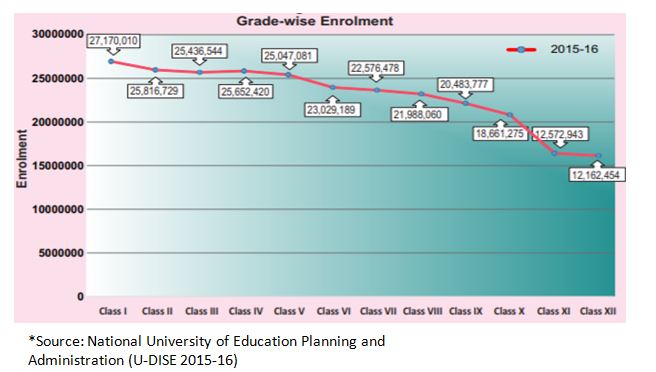Story
Education is the basic requirement for human development. With education, employment opportunities are broadened and income levels are increased. The development of an individual and the progress of a nation depend on education.
Based on the data from National Family Health Survey-3, it was found that only 75 percent of the children in the age group 6 to 16 years were attending school. About 14 percent of the children never attended the school and 11 percent dropped out of school for various reasons. the dropouts among the children belonging to illiterate parents were four times higher than that of the literate parents. It was also observed that if parents were not working, the possibility of dropout among their children was relatively high. The study suggests that unless and until there is considerable improvement in the economic status of households and change in the social attitudes of parents, achieving the goal of universalization of school education will remain a major challenge for India.
According to the ministry of human resource development (MHRD), 62.1 million children are out of school in India. The 2011 Census estimated the figure at 84 million—nearly 20% of the age group covered under the Right to Education (RTE) Act.
Modern economic growth has little room for people with rudimentary skills and low education levels. The age of assembly-line production has given way to newer technologies, with complex processes, requiring a better trained workforce. And that’s where things don’t look good for India. The quality of education in rural schools is dismal, on average. Among 14-18-year-olds surveyed by the ASER teams, only 43% could solve a class IV mathematics problem. This proportion was roughly the same among 14-year-olds as among 18-year-olds, showing that the problem of low learning outcomes was not resolved by remaining in school. Only 40% of 18-year-olds could take 10% off a given number. More than that percentage could not locate their state on a map of India.
Based on the statistics from Ministry of Education data (refer table 1); the average drop out %age among the top 10 states is 9%. There are states where the primary school drop out rate is as high as 12%.
Furthermore, the average number of dropouts gradually increase as the grades progress from Grade 1 to Grade 11 as shown in Table 2.
We at Srijan ka sankalp are bound to spread awareness on the importance of continuity in education. To read more about out our “Saksham Bharat” projects on continuity of education click here.
Want to donate by phone?
Not a problem. Call us now
+91-9026116086
Or email us :
admin@srijaneksoch.org



